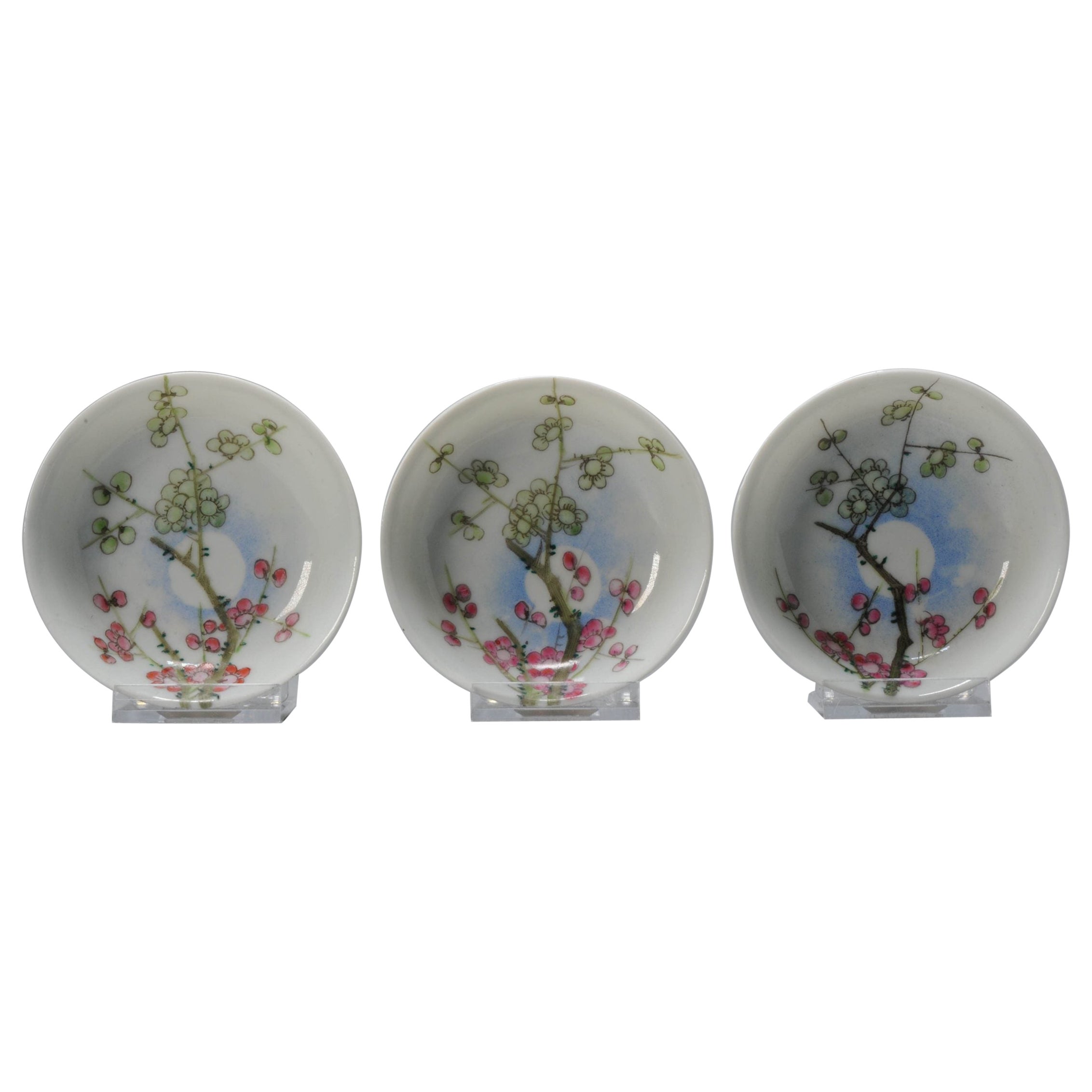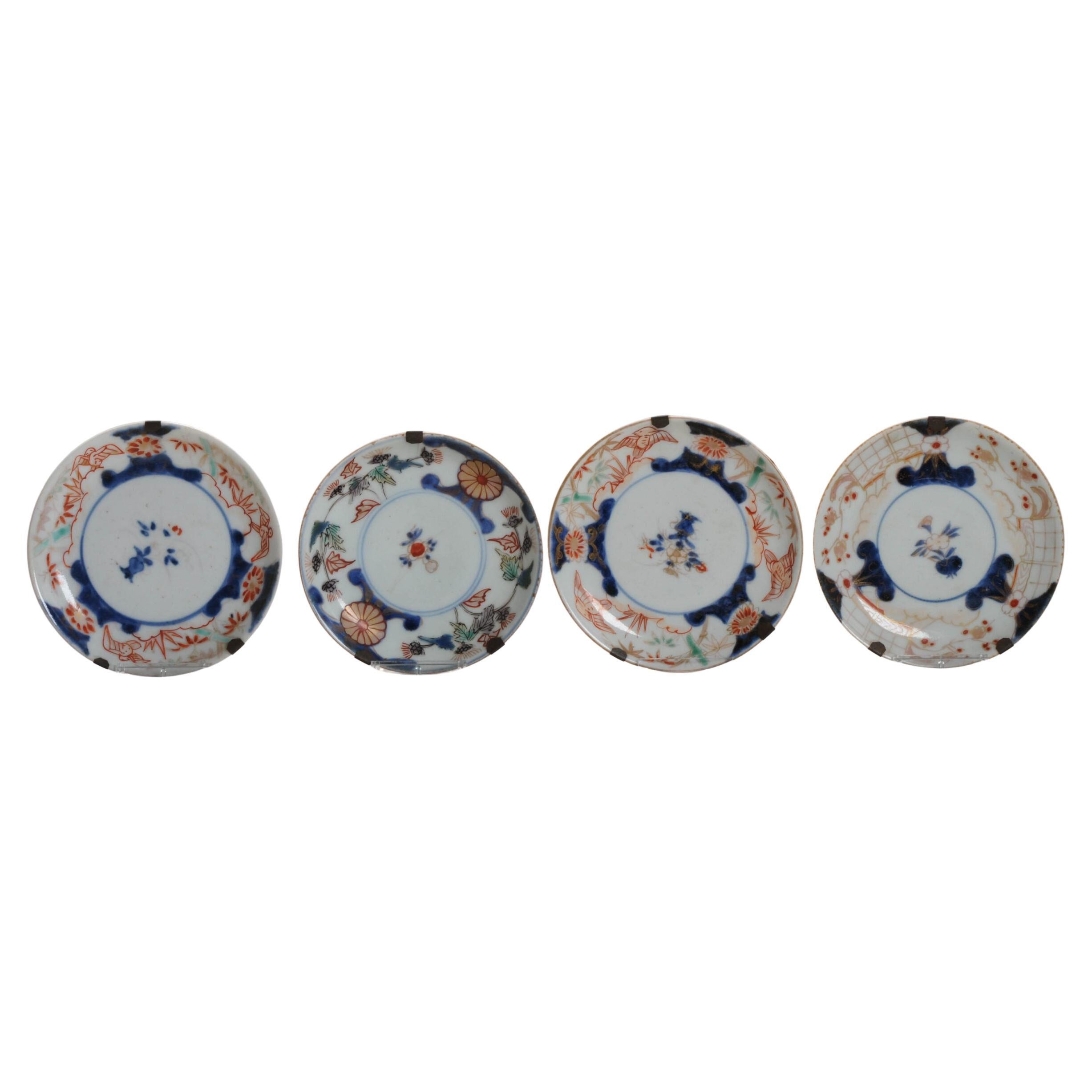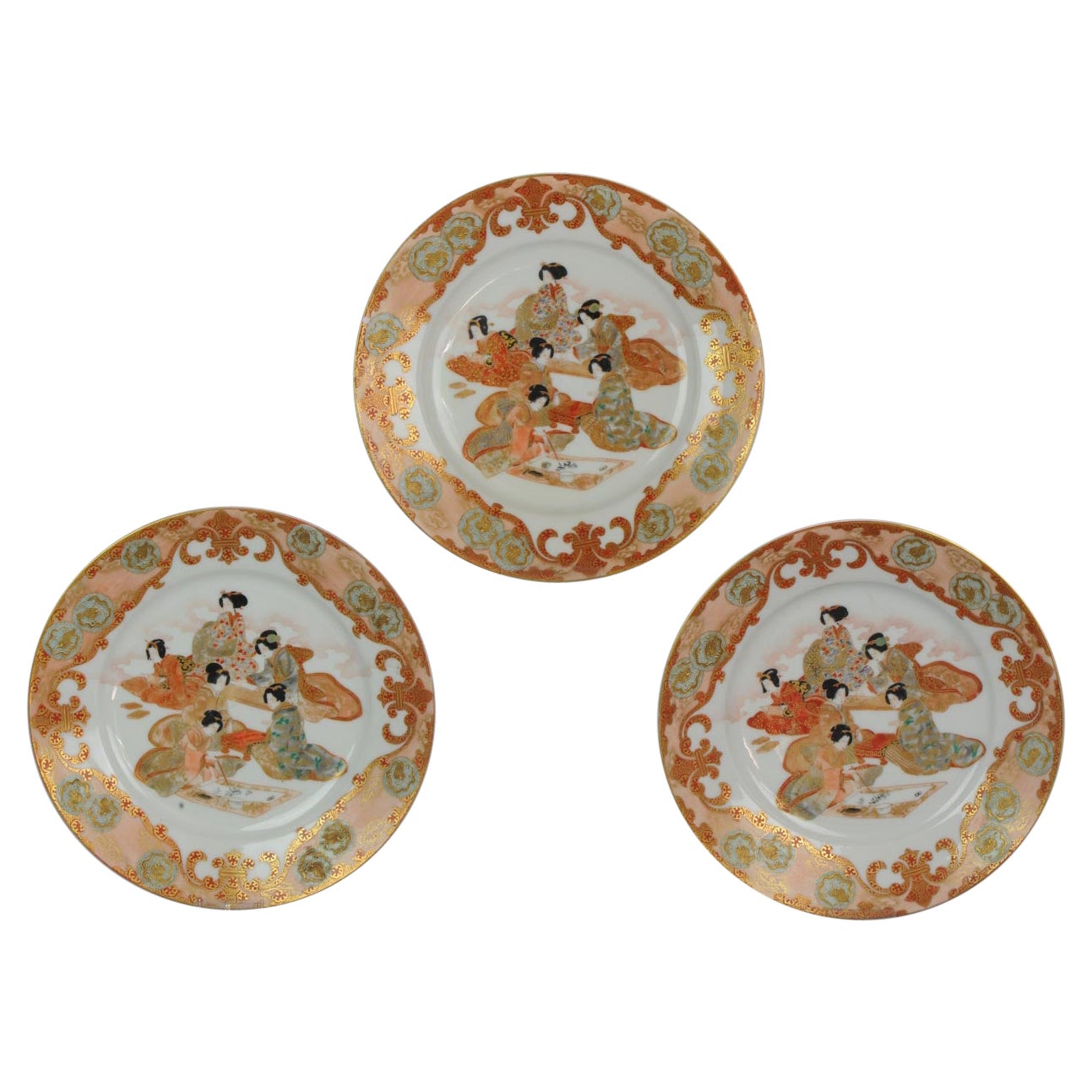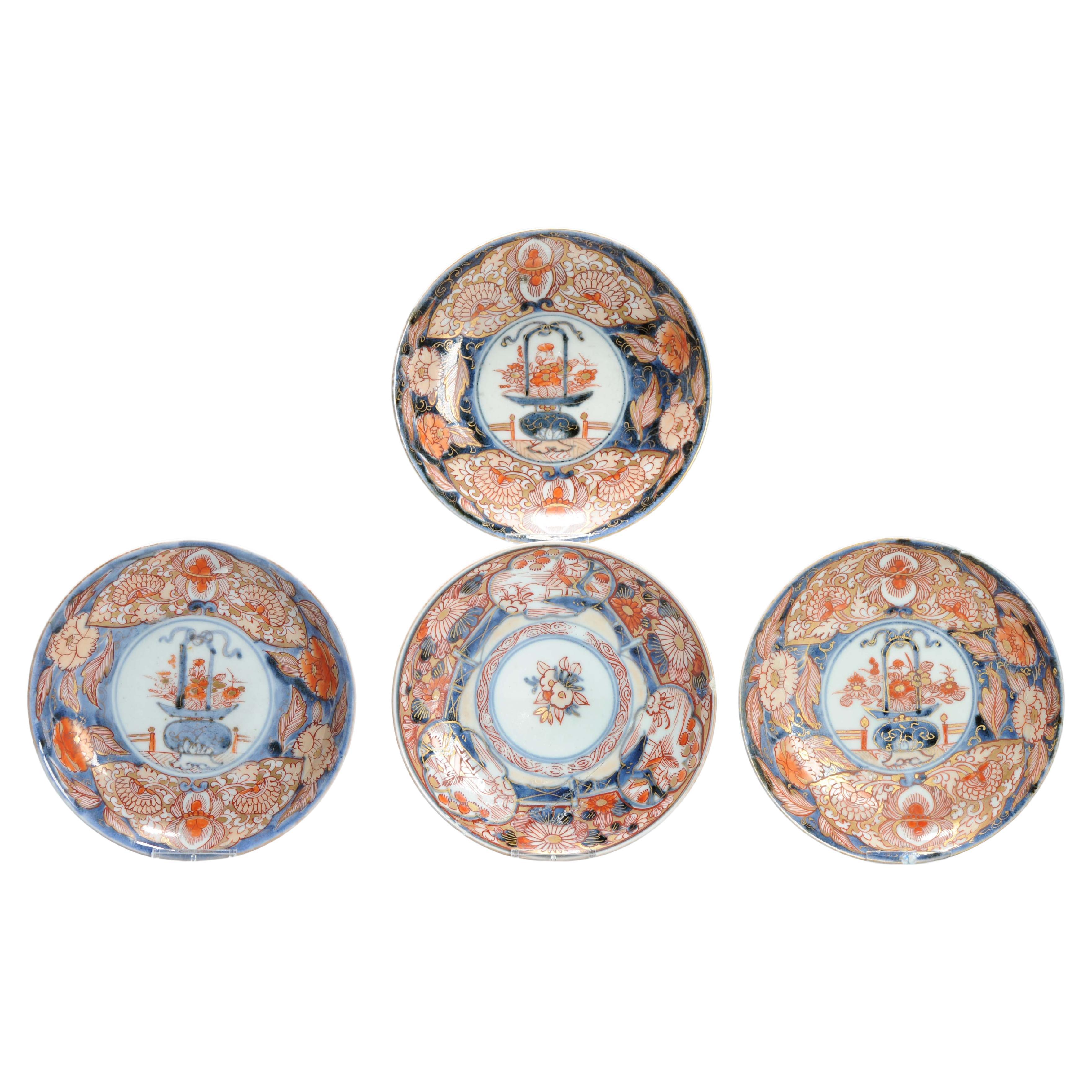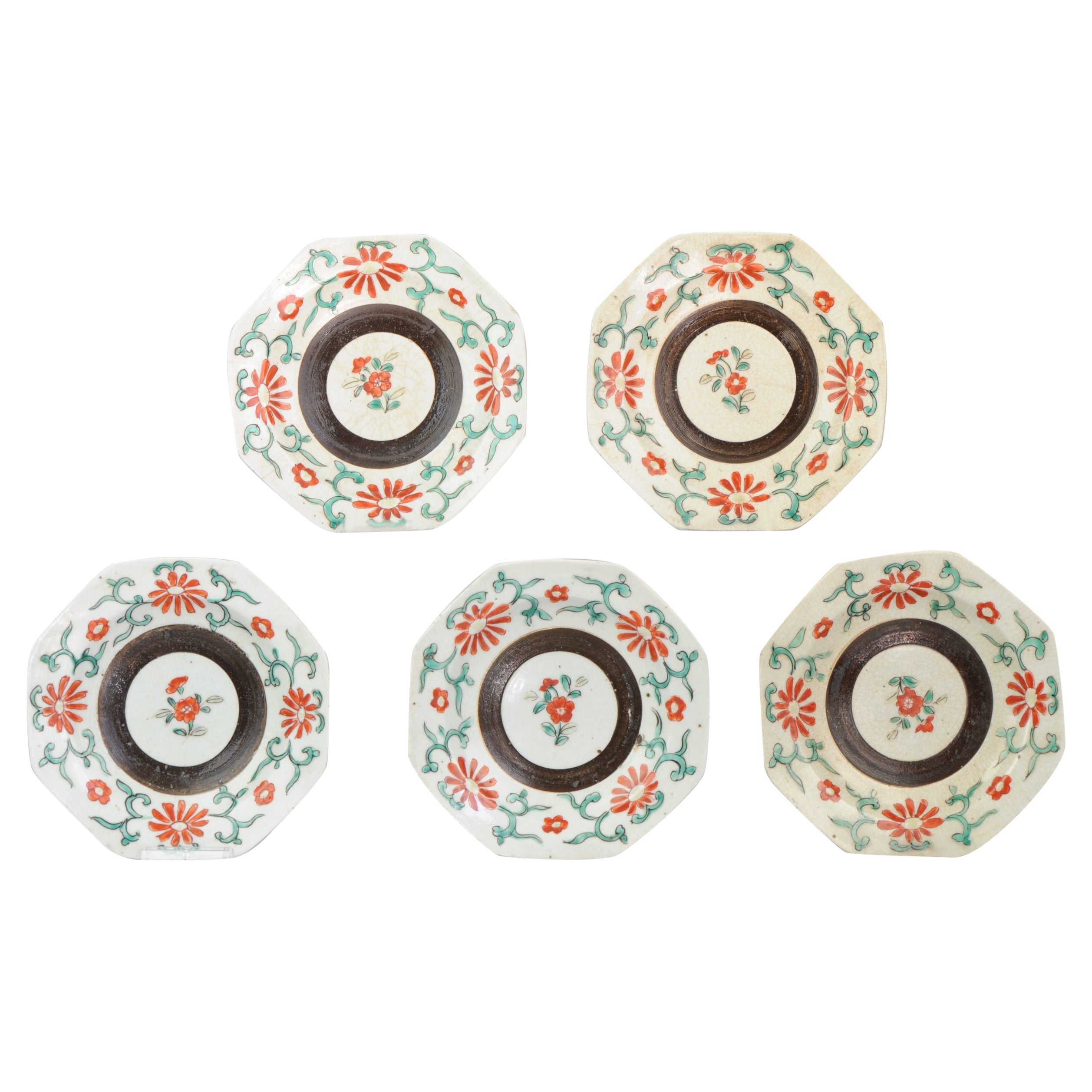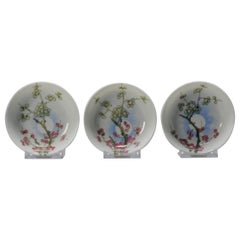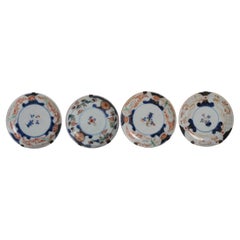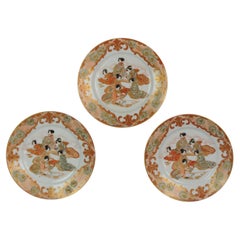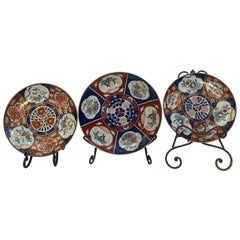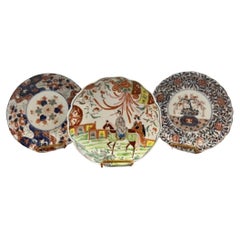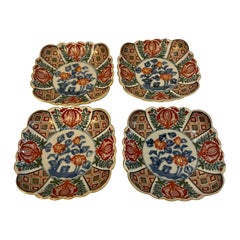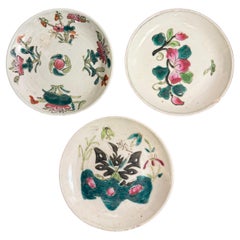Items Similar to Set of 3 Antique Kutani Edo Period Japanese Porcelain Dishes, Japan, 18/19th C.
Want more images or videos?
Request additional images or videos from the seller
1 of 5
Set of 3 Antique Kutani Edo Period Japanese Porcelain Dishes, Japan, 18/19th C.
$818.32per set
$1,022.90per set20% Off
£608.75per set
£760.93per set20% Off
€682.40per set
€853per set20% Off
CA$1,120.56per set
CA$1,400.70per set20% Off
A$1,245.91per set
A$1,557.39per set20% Off
CHF 650.55per set
CHF 813.18per set20% Off
MX$15,165.76per set
MX$18,957.19per set20% Off
NOK 8,300.67per set
NOK 10,375.84per set20% Off
SEK 7,777.34per set
SEK 9,721.67per set20% Off
DKK 5,194.73per set
DKK 6,493.42per set20% Off
Shipping
Retrieving quote...The 1stDibs Promise:
Authenticity Guarantee,
Money-Back Guarantee,
24-Hour Cancellation
About the Item
A very nice set of 3 polychrome dish of moulded shape. Unusual shape and painting.
Edo period.
Additional information:
Material: Porcelain & Pottery
Japanese Style: Kutani
Region of Origin: Japan
Period: 18th/19th Century
Japan Dynasty Period: Edo Period (1603-1867)
Condition: 1 dish with a chip and small line to the rim.
Dimension: Ø 13.4 × 2.1 H cm
- Dimensions:Height: 0.83 in (2.1 cm)Diameter: 5.28 in (13.4 cm)
- Sold As:Set of 3
- Style:Edo (Of the Period)
- Materials and Techniques:
- Place of Origin:
- Period:
- Date of Manufacture:17th century
- Condition:1 dish with a chip and small line to the rim.
- Seller Location:Amsterdam, NL
- Reference Number:Seller: 1455086245931stDibs: LU4863242695602
About the Seller
5.0
Platinum Seller
Premium sellers with a 4.7+ rating and 24-hour response times
Established in 2015
1stDibs seller since 2019
264 sales on 1stDibs
Typical response time: 2 hours
- ShippingRetrieving quote...Shipping from: Amsterdam, Netherlands
- Return Policy
Authenticity Guarantee
In the unlikely event there’s an issue with an item’s authenticity, contact us within 1 year for a full refund. DetailsMoney-Back Guarantee
If your item is not as described, is damaged in transit, or does not arrive, contact us within 7 days for a full refund. Details24-Hour Cancellation
You have a 24-hour grace period in which to reconsider your purchase, with no questions asked.Vetted Professional Sellers
Our world-class sellers must adhere to strict standards for service and quality, maintaining the integrity of our listings.Price-Match Guarantee
If you find that a seller listed the same item for a lower price elsewhere, we’ll match it.Trusted Global Delivery
Our best-in-class carrier network provides specialized shipping options worldwide, including custom delivery.More From This Seller
View AllSet of 3 Antique Japanese Porcelain Kaiseki Bowls Japan, 19th/20th Century
Located in Amsterdam, Noord Holland
Faboulous japanese porcelain shallow bowls.
Stamp mark at the base.
Additional information:
Material: Porcelain & Pottery
Type: Bowls
Japanese Style: Other
Region of Origin: Japan
...
Category
Antique 19th Century Japanese Decorative Bowls
Materials
Porcelain
$470 Sale Price / set
20% Off
Set of 4 Antique Japanese Porcelain Dishes Imari with Old Wall Hangers, c.1700
Located in Amsterdam, Noord Holland
Porcelain decorated in underglaze cobalt blue and overglaze red.
Additional information:
Material: Porcelain & Pottery
Region of Origin: Japan
Period: 17th century, 18th century
Con...
Category
Antique 17th Century Japanese Decorative Dishes and Vide-Poche
Materials
Porcelain
Set of 3 Antique Lovely Figural Japanese Porcelain Kutani Plates Marked Base
Located in Amsterdam, Noord Holland
Nice Quality hand painted Kutani plates. Also marked at base.
Additional information:
Material: Porcelain & Pottery
Type: Plates
Region of Origin: Japan
Period: 19th century Meiji P...
Category
Antique 19th Century Japanese Decorative Dishes and Vide-Poche
Materials
Porcelain
$573 Sale Price / set
20% Off
Set of 3 Antique Japanese Footed Bowls Porcelain Dish Japan, 18/19th Century
Located in Amsterdam, Noord Holland
A very nicely decorated set footed dishes very unusual decoration.
Additional information:
Material: Porcelain & Pottery
Region of Origin: Japan
Period: 18th century, 19th century Q...
Category
Antique 18th Century Japanese Decorative Dishes and Vide-Poche
Materials
Porcelain
$638 Sale Price / set
20% Off
Sharing with you this very nicely decorated set of porridge dishes. Set of 4 ——
Located in Amsterdam, Noord Holland
Sharing with you this very nicely decorated set of porridge dishes. Set of 4
Condition
2 dishes with restoration and 2 perfect. Size: 15.5x3CM DiameterxHeight
Period
18th century Q...
Category
Antique 17th Century Edo Ceramics
Materials
Porcelain
# 5 Ko-Kutani Edo Period 17th Century Japanese Porcelain Dish Arita
Located in Amsterdam, Noord Holland
A very nice set of polychrome dishes with green and red overglaze colors. Interesting brown circle in the centre.
Early Edo period.
Condition
No real damages, just crackl...
Category
Antique 18th Century Japanese Edo Ceramics
Materials
Porcelain
$1,723 Sale Price / set
20% Off
You May Also Like
19th Century 3 Pieces Japanese Porcelain Dishes Meiji Period
Located in Brea, CA
19th century 3 pieces Japanese porcelain dishes Meiji period decorated, largest 15.25'' x 2'', medium 13.25'' x 2'', smallest 12'' x 1.5''.
Category
Antique Late 19th Century Japanese Japonisme Decorative Dishes and Vide-...
Materials
Porcelain
Unusual Collection of three antique Japanese imari dishes
Located in Ipswich, GB
Unusual Collection of three antique Japanese imari dishes having a lovely collection of three antique Japanese imari dishes hand painted with figures, flowers, scrolls and trees in w...
Category
Early 20th Century Ceramics
Materials
Ceramic
Unusual Set of 4 Small Antique Japanese Quality Imari Dishes
Located in Suffolk, GB
Unusual set of 4 quality antique Japanese Imari Dishes in wonderful hand painted red, green, blue and gold colours with a scalloped edge
A charming set in fabulous original conditi...
Category
Early 20th Century Japanese Dinner Plates
Materials
Porcelain
$1,310 Sale Price / set
20% Off
A Set of Three Chinese Familie Rose Ceramic Saucers with Marks, 19th Century
Located in ARMADALE, VIC
A Set of Three Chinese Familie Rose Ceramic Saucers with Marks, 19th Century
Provenance: Private Victoria Collection.
Dimensions:
Height: 2.2cm
Diameter: 13.5cm
Category
Antique 19th Century Chinese Qing Ceramics
Materials
Ceramic
$125 Sale Price / set
50% Off
Three Pieces Antique Japanese Nippon Plates Signed C1930
Located in Big Flats, NY
Three Pieces Antique Japanese Nippon Plates C1930.
Measures - 1.5"H x 9.75"W x 9.75"D.
A set of three antique Japanese Nippon plates, dating to ...
Category
20th Century Japanese Ceramics
Materials
Porcelain
Wonderful collection of three antique Japanese imari plates
Located in Ipswich, GB
Wonderful collection of three antique Japanese imari plates, with scallop shaped edges, having quality hand painted panels with flowers, leaves and scrolls in wonderful red, blue, gr...
Category
Early 20th Century Ceramics
Materials
Ceramic
More Ways To Browse
Japanese Porcelain Edo
Japanese Porcelain 17th Century
Antique Desk Boston
Antique Dish Cabinet
Antique Dog Sculpture Statue
Antique Hoe
Antique Horse On Wheels
Antique House Jack
Antique Industrial Cart
Antique Jacobean Chest Of Drawers
Antique Japanese Altar
Antique Japanese Umbrella
Antique Kimono Fabric
Antique Louis Xv Style Bombe Commode
Antique Mechanical Toys
Antique Pen Display Case
Antique Pewter Dish
Antique Pink Glass Bottles
